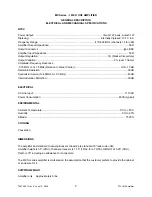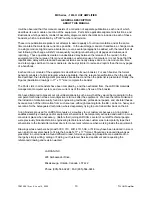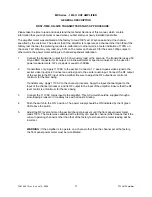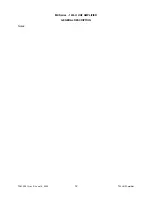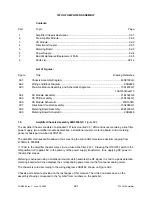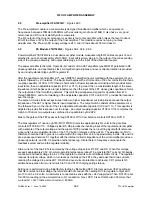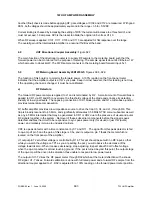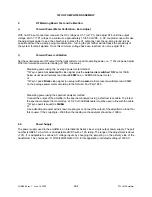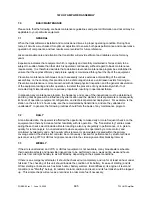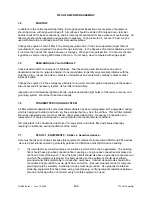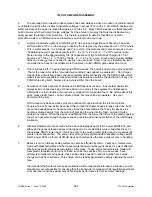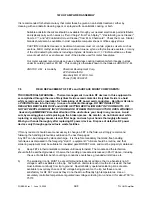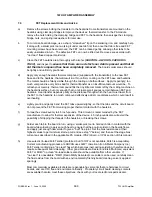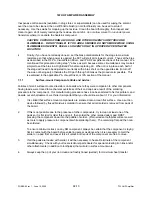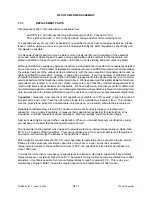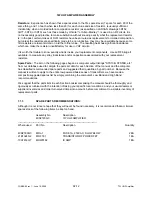
1W UHF AMPLIFIER ASSEMBLY
PUB99-92 rev 1: June 19, 2000
92-11
1
W UHF Amplifier
7.1.2
REPLACEMENT
PARTS
All component parts in the transmitter are available from:
LARCAN Inc., 228 Ambassador Drive, Mississauga, Ontario, Canada L5T 2J2;
Phone (905)-564-9222, or FAX (905)-564-9244,
during and after normal working hours.
To expedite delivery of your order, especially if you call after hours and get our answering service, please
leave a number where we can return your call, and please identify the parts requested as specifically and
completely as possible.
Our Renewal Parts Department may be able to more quickly identify your requirement if the assembly
name and number where the part is used, and any applicable revision number for that assembly, are
stated in addition to the part's symbol number, description, and its drawing and part number as listed.
Although LARCAN can supply any part when required, in many instances it may be more conveniently obtained
from a local source. Part numbers of replaceable components used in LARCAN equipment are almost always
the catalog numbers of the various parts manufacturers, with the rare exception of proprietary items such as
tightly specified RF power FETs, crystals, or analog 50
μ
A meters. If your local dealer or distributor should
encounter problems and you require further information, please feel free to call upon anyone in our customer
service department at the telephone number given above. We have assumed that reliable dealers of electronic
components are located in or near your station market area, and that they maintain adequate stocks of
"commodity" items such as resistors and capacitors. We have further assumed that you prefer to obtain most
non-proprietary replacement parts from your local dealer, therefore we have listed very few such commodity items
here, but we believe the following information might be useful to you during your spares requirements planning:
Capacitors:
Generally, most ceramic or film capacitors are reliable, and "5% spares" (1 spare for each 20
identical parts, and 1 each if less than 20) will be found to be a satisfactory inventory level. This includes
ceramic, polystyrene, polyester, polycarbonate, polypropylene, and (usually) solid electrolyte tantalums.
Reliability notwithstanding, it is worth the trouble to know exactly what is inside your replacement
capacitors. Use a bridge if available, to measure their capacitance (especially for electrolytics), stray
inductance, and ESR (equivalent series resistance). Measure leakage current at rated voltage.
Aluminum electrolytics require further consideration. When you consider aluminum electrolytics, usually
you will need to consider their operating temperature as well:
The transmitter cooling system was designed to provide worst-case internal temperatures no higher than
60°C, in all modules of the transmitter. This cooling is based on 45°C maximum ambient air temperature
and normal air flow through the intakes of the transmitter cabinet.
Most capacitor vendors state that 60°C or lower operating temperatures can be expected to give service
lifetimes for their aluminum electrolytic capacitors of ten years or longer, but as their operating
temperature increases to the specified maximum of 85°C, the specified service lifetime decreases to a
mere 1000 hours.
You may therefore wish to increase your spares level for aluminum electrolytic capacitors if site ambient
temperatures are consistently higher than 40°C, because if cooling air flow becomes restricted due to filter
saturation, it is entirely possible for on-board temperatures to reach or exceed 85°C. This is why your
maintenance program MUST include the regular inspection and replacement of filter media.

